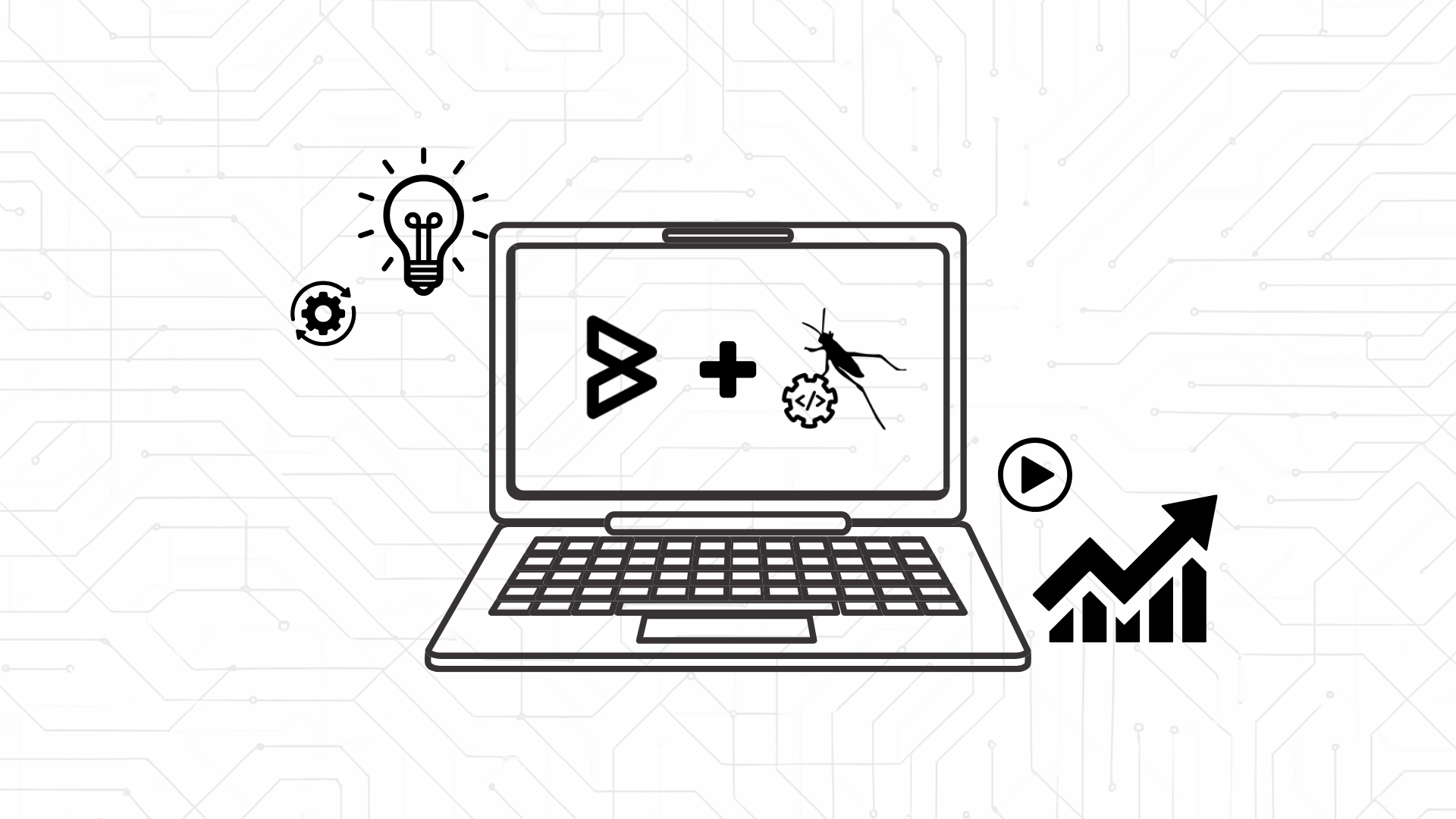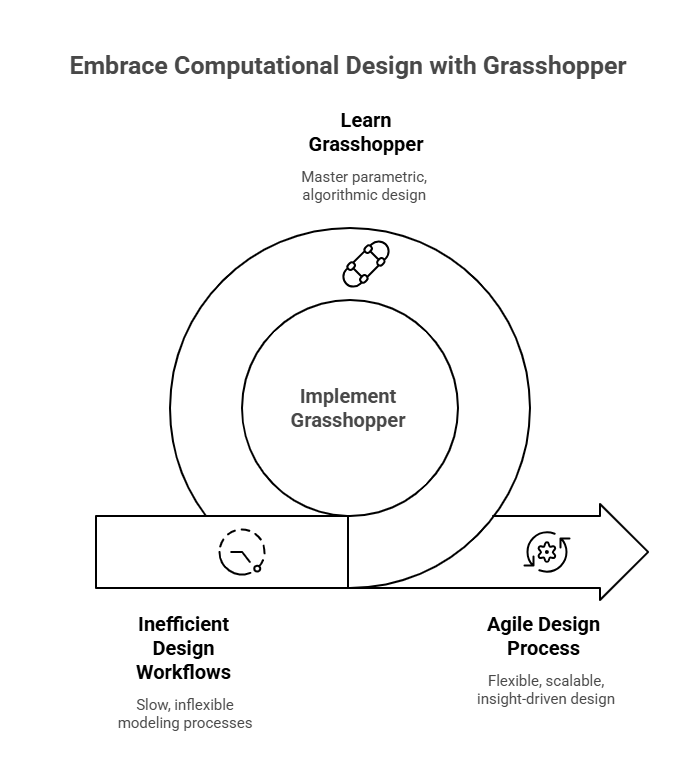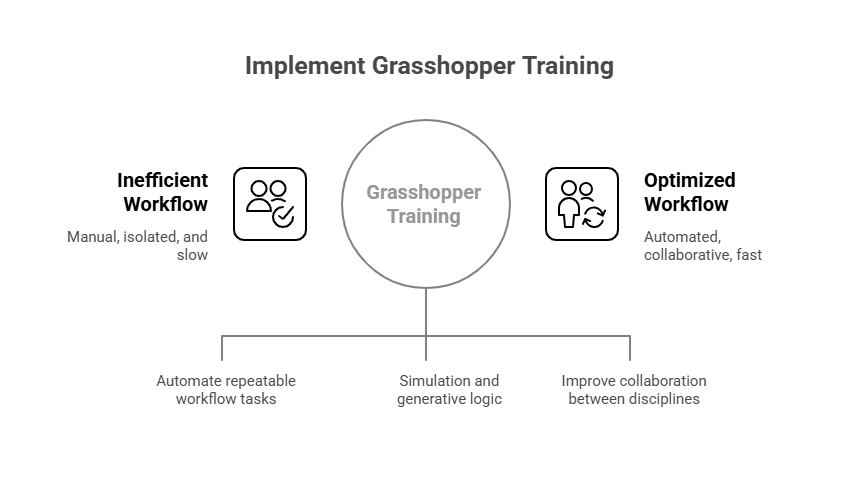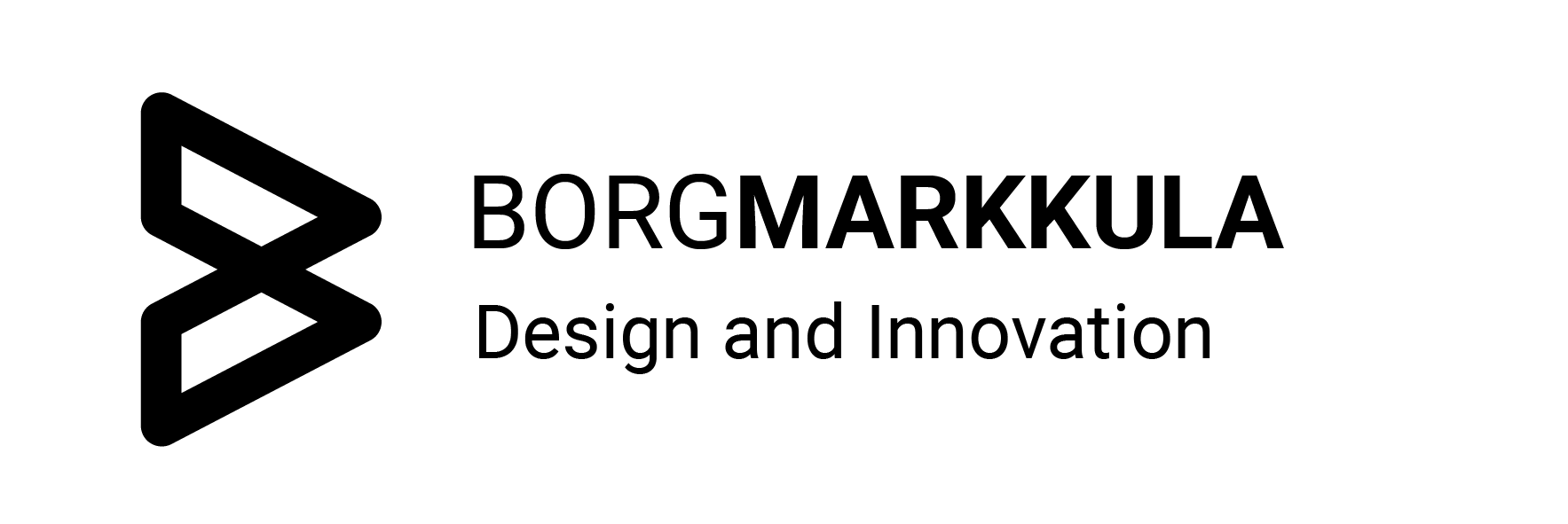
How Grasshopper Training Transforms Industry Design Teams
How many hours does your team lose every month to rework that could’ve been automated?
In industries like architecture, engineering, and product design, most teams don’t suffer from a lack of skill, they suffer from workflows that weren’t built for change. Parametric design with Grasshopper offers a smarter, scalable way to handle variation, speed up iteration, and reduce manual overhead. But learning the tool isn’t enough. To make it work in real projects, your team needs the right kind of training, one that fits your context, not someone else’s syllabus.
This blog breaks down what that looks like, and why more firms are quietly building Grasshopper fluency into their core capabilities.
Computational Design Is No Longer Optional

Design has never operated in a vacuum, but today, the pressure to deliver faster, respond to environmental constraints, and interface seamlessly with fabrication or analysis tools is higher than ever.
Static workflows and manual modeling processes fall short when:
- Designs need to respond to real-time data
- Teams must generate multiple high-fidelity options quickly
- Clients expect performance-informed solutions from the first meeting
Grasshopper enables parametric and algorithmic design that adapts to these realities. It allows designers to embed logic, variation, and rules directly into their models, making the process more flexible, scalable, and insight-driven.
But here’s the catch: for all its power, Grasshopper has a learning curve. And for industry teams, time is limited.
The Learning Gap Between Tool and Application
Many online Grasshopper courses focus on explaining components or replicating basic design tricks. For solo learners or students, this might be enough.
But for industry teams, the challenges are different:
- How do we connect environmental data to early-stage design?
- Can we reduce repetitive modeling with automation?
- How do we integrate parametric logic into fabrication workflows or BIM systems?
What teams need isn’t just software training. They need applied, domain-specific learning that fits their projects, tools, and roles.
That’s a very different approach from “learn Grasshopper in 30 days.”
What Practical Grasshopper Training Looks Like for Teams
Some of the most effective training we’ve seen takes place not in classrooms, but on real projects.
For example:
- A landscape architecture firm designing climate-resilient public spaces used Grasshopper to simulate hydrology, process GIS data, and automate scenario reporting
- An engineering consultancy used parametric optimization to reduce material waste while improving structural performance
- A product design team cut weeks from its prototyping cycle by linking Grasshopper logic directly to fabrication specifications
In each case, the common thread wasn’t just using Grasshopper, it was using it in a way that aligned with their industry context and project goals.
Learning That Fits Inside the Workflow

When training is tied to real problems like optimizing a bridge design or visualizing urban microclimates, it becomes more than an upskilling effort. It becomes a capability investment.
That’s where structured, project-aware Grasshopper training plays a role.
Rather than teach the tool in isolation, it focuses on answering:
- What are the repeatable tasks in your workflow that Grasshopper can automate?
- Where can simulation or generative logic improve decision-making?
- How can parametric models improve collaboration between disciplines?
For many teams, training becomes the trigger for workflow change, not an add-on.
Subtle Shifts, Tangible Gains
In our work with design firms, we’ve seen that the most impactful outcomes often come from small shifts:
- Automating site analysis to save days in early design
- Creating adaptive design templates that reduce rework
- Embedding material logic directly into product configuration models
Over time, these shifts compound. Teams gain confidence. Projects gain efficiency. And computational design becomes part of the culture, not just a niche skill.
A Quiet Trend Is Taking Root
More firms are beginning to see computational design not as a specialist task, but as a team capability. That doesn’t mean everyone becomes a technical expert, but it does mean the logic, mindset, and tools of parametric design become shared across roles.
It’s no longer about replacing designers with algorithms, it’s about enabling designers to work smarter, faster, and more collaboratively.
Your Workflow Has Evolved. Has Your Training?
The best-performing teams we’ve worked with didn’t just add Grasshopper to their toolkit. They used it to reshape the way they approach design problems.
Not through abstract theory, but through workflow-aligned learning that fits their projects, their constraints, and their tools.
It’s not about turning your designers into coders.
It’s about giving them the logic, flexibility, and automation needed to respond faster, collaborate better, and deliver smarter solutions.
If your team is building climate-resilient landscapes, structurally optimized buildings, or customizable products, then this isn’t just a software skill. It’s a business advantage.
The question isn’t whether Grasshopper fits into your workflow.
It’s: how much longer can you afford to work without it?
Book a free 30-minute call with us to discuss your project:
Schedule here on Calendly
https://lnkd.in/d2SdSVbc



